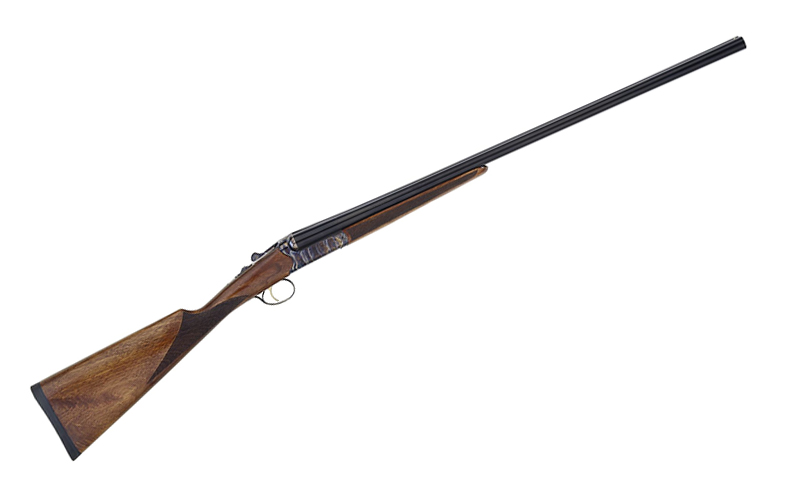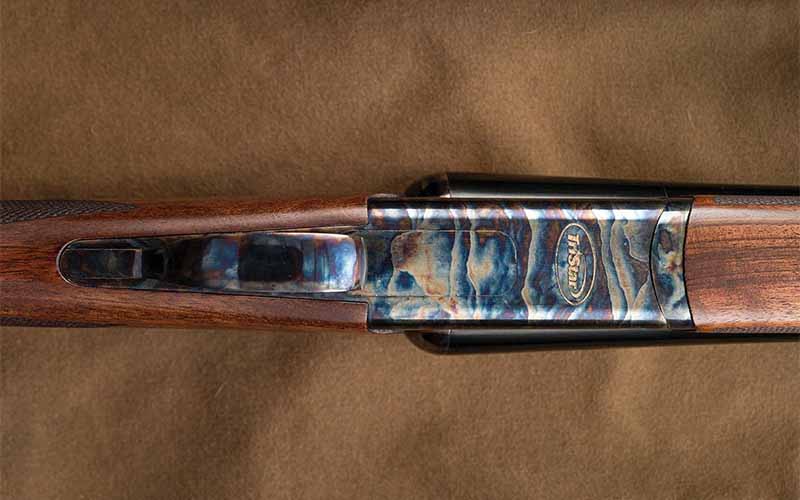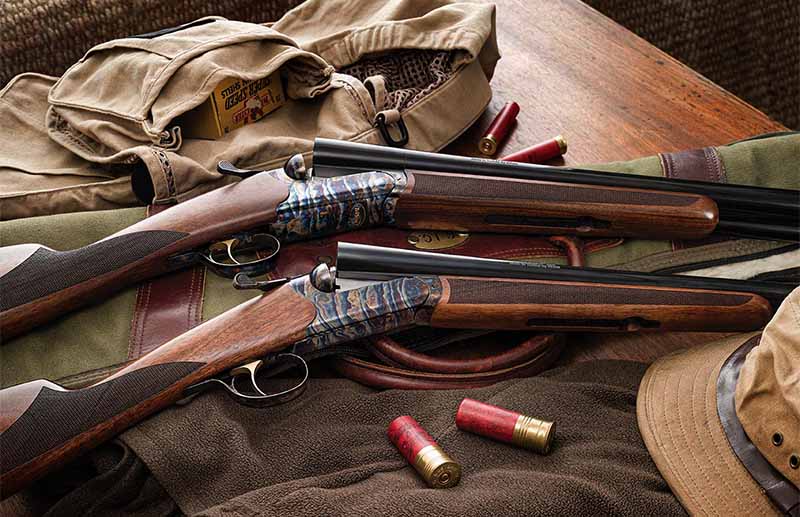TriStar Arms has learned to focus on niche markets to become more than just another importer.
TriStar Arms: Have you heard of them? If that answer is “no,” you don’t need to start questioning your gun knowledge. The brand has only been around for a short time and, oddly enough, TriStar’s success story was almost never written—until Gus Bader bought the pen in 2005. But his love affair with firearms began long before he bought TriStar.
“It was almost purely by accident,” said Bader, president of TriStar. “In my previous life, I worked for Carrier. I was stationed in Greece and had most of Europe, northern Africa and the Middle East as my territory. Growing up in Lebanon, shooting sports were few and far between, but my father introduced me to shotgun shooting, and I was hooked.
“I was in the Basque region of Spain for business,” Bader continued, “and I asked the taxi driver if we could tour a few gun factories. After literally walking up and knocking on the door, I was offered a tour and ended up purchasing five beautiful over-and-under shotguns.
It didn’t take Bader long to figure out the art of the gun deal.
“When I returned home from the trip, it took some research and lots of paperwork, but I was able to get the guns shipped over,” he said. “I showed them off to my friends, who all pulled out their wallets and offered three times what I had paid for them. The next time I went back, I bought a few more and then a few more. It became a hobby that I was sort of obsessed with. By 1983, I decided to pursue firearms importing full-time. I started American Arms, and we ran a very successful company for 13 years or so. But by 1996, with so many municipalities suing gun companies, I didn’t know if we would survive.”
Bader’s success in the firearms business not only survived, but it would soon thrive thanks to fate … or luck.
“By pure happenstance, I was approached by a family that gave me an offer too good to turn down,” he said.
The plot thickened, as Bader explained. “For a few years, I bounced around doing some consulting within the industry. In 2005, I was approached with an offer to take over TriStar, which was founded by two of my former execs at American Arms and another lady from the industry—thus the Tri in TriStar because of the three founders.”
At the time, TriStar was the epitome of what we’d call a “gunsmith special.”
“Unfortunately, TriStar was in real bad shape,” Bader continued. “In my mind, it had a 50/50 chance of survival, and we struggled in the early years. Slowly we got organized. Both my sons came to work for me, and we started turning a profit.”

Firearms + Family
“It has always been a dream of mine to work alongside my father,” said Ryan Bader, who serves as TriStar’s vice president of sales and marketing.
“I grew up fascinated by what my father did,” Ryan said. “He introduced my brother and me to hunting, and I felt drawn to it, especially after college. I’d planned to work for a larger company within the industry, partly at my dad’s request to gain knowledge and perspective of how things worked. Long story short, Dad needed help as TriStar started to grow, and I decided to come on full time.”
As TriStar began to prosper, the Bader family set, met and created new goals for the company as they leveraged their love for firearms with their passion for family.
“Early on, our goal was just to survive,” Ryan said. “A small, relatively unknown shotgun company trying to compete with the likes of Remington, Winchester, Mossberg and Beretta is a pretty monumental task. We started out competing on price. As an importer, we could go to different countries and locate factories with decent products that were desperate to get into the U.S. market. At the time, Turkey made sense. Guns were rough—not reliable, but inexpensive—and there was a market for budget guns.
“We also made a point not to wake the giant,” Ryan added. We didn’t focus on pump guns (the 870 and 500 were kings). Instead, we focused on semi-autos and over-and-unders. We found that we didn’t need a seat at the table; there were plenty of crumbs on the floor to get fed.”
TriStar quickly learned that, to survive, you had to make a quality product—even if they were just crumbs.
“After a few years and some modest growth, it became evident that you can’t hide from poor craftsmanship,” Ryan admitted. “With blogs and online reviews starting to become a real thing, we quickly saw that we needed to change our tune. We could still be price leaders, but we started focusing on making inexpensive and good-quality guns.”

Gaining Momentum
And so, TriStar began to market two things Americans loved—value and reliability—focusing on quality control as a critical aspect of how TriStar could separate itself from other import companies.
“We worked with our Turkish factories and educated them on improving quality and reliability,” Ryan said. “We on-boarded a few new factories that shared the same ideology and craftsmanship goals. People soon took notice.”
Armed with improved firearms and media buzz, TriStar began to identify and then methodically attack critical parts of the industry.
“We started focusing on niche markets,” Ryan said. “Sub-gauge semi-autos and O/Us, a value-based trap-shooting line with high-grade craftsmanship, including side-by-sides that looked and felt Italian … without the Italian price tag. That’s where we focused.”
As the business grew, Ryan credited his father’s manufacturing and engineering decisions as paramount to helping TriStar grow quickly.
“Dad has always been good at seeing the forest through the trees,” Ryan said. “The gun that set us apart was the .410 semi-auto Viper G2. It was the first of its kind to function with both 2¾- and 3-inch shells. From there, we made variants: a .410 turkey gun, youth guns, etc. We continue to look at areas that seem to get overlooked.”
Ryan’s father’s wisdom served his family and TriStar well early and often.
“Honesty is a good policy,” Bader said. “Those are words we have always lived by. ‘Lemon to lemonade’ is the other slogan we keep in the house. The bad news is inevitable. Things break down, there are logistical issues and many things can go wrong. In that instant, we have always prided ourselves on finding a solution. Sometimes, those same problems open doors to new opportunities.”
While TriStar marketed itself as a value-based quality firearms company, it has always prided itself on world-class customer service.
“It’s one thing to sell a gun; it’s another to provide good, honest customer service,” Ryan said. “We excel in that department. We had to separate ourselves the best we could; customer service has always been high on our list. Are we perfect? Not by a long shot. But remembering that we serve a customer has always been a good code of business. Without those customers, you are nothing.”

Looking Downrange
Gus and Ryan are laser-focused with their vision for TriStar.
“We want our brand to be something people trust,” Ryan said. “When they hear TriStar, they think of good quality guns at a good price. No more, no less. We aren’t worried about a popularity contest or making sure we have name recognition like the big boys. That comes with time and only when you deliver on the small things. If we can continue that, TriStar should have a place for the next generation.
“We’ll continue to push for new ideas and innovative products,” Ryan said. “No doubt, we’ll look at other places around the world, see how we can maximize our offering and make sure we deliver quality guns to folks who want them”.
Editor’s Note: This article originally appeared in the May 2022 issue of Gun Digest the Magazine.
More On Shotguns:
-
 NEXT STEP: Download Your Free Storm Tactical Printable Target Pack
NEXT STEP: Download Your Free Storm Tactical Printable Target Pack62 Printable MOA Targets with DOT Drills – Rifle Range in YARDS This impressive target pack from our friends at Storm Tactical contains 62 printable targets for rifle and handgun range use. Target grids and bullseye sizes are in MOA. Ideal for long-range shooting!
Subscribe to the Gun Digest email newsletter and we’ll send your print-at-home target pack right away. Just enter your email address below.

